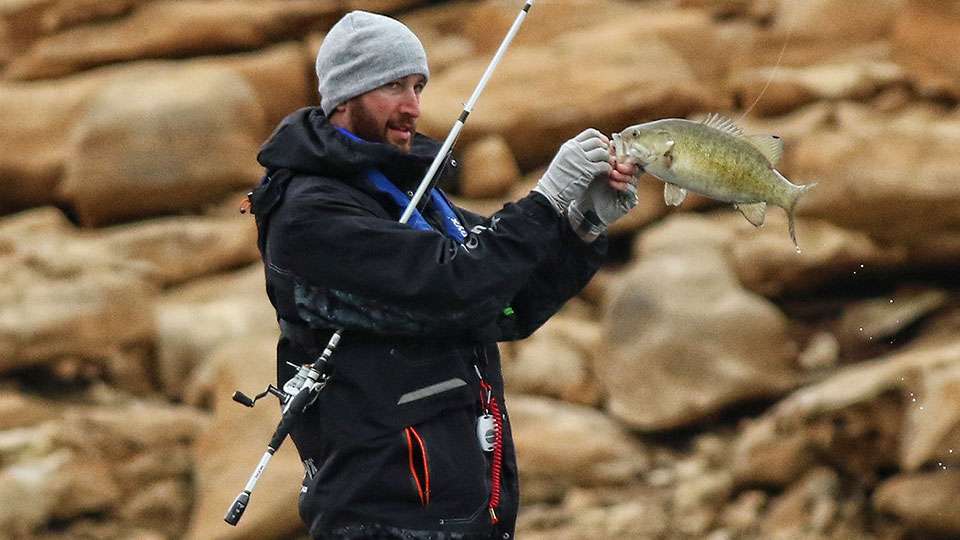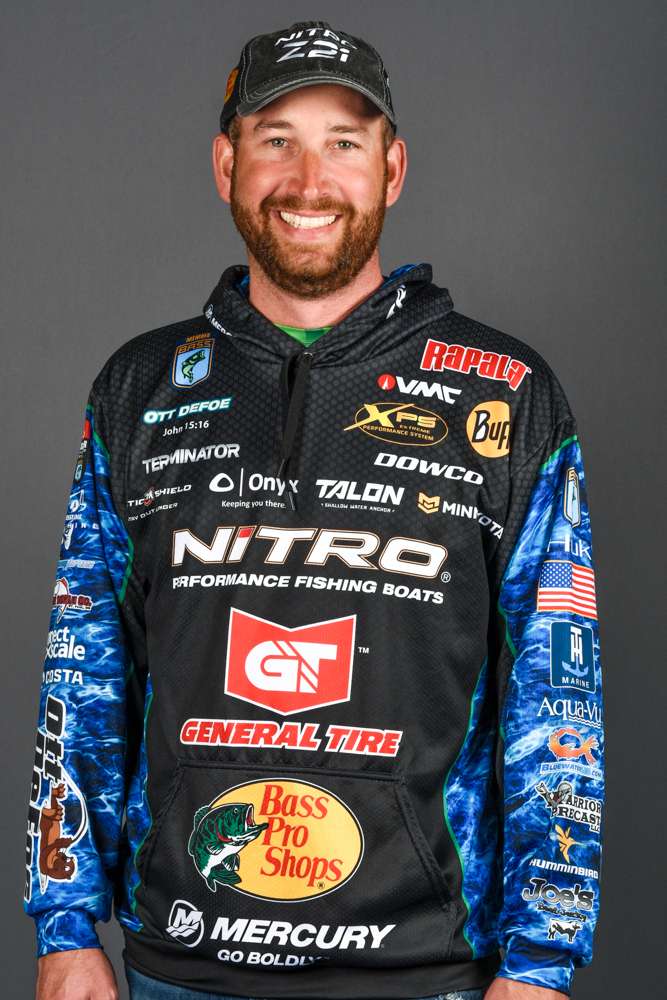
Smallmouth don’t use cover like largemouth
Cover is important to smallmouth and largemouth but in very different ways. Largemouth bass like to be in cover. If you find a weedbed holding green bass, they’ll usually be right in it. You can fish the heavy stuff or flip and pitch the holes and usually catch them. But, if you’re looking for brown bass you’ll usually do better fishing the outside edges, and even out a ways from there.
The same thing is true of stumps, rocks, brush piles or most anything else. Largemouth bass like to be in or on cover. Smallmouth bass like to be around cover.
Smallmouth will choose food over cover
Largemouth bass will hold in cover even when they’re feeding. In fact, that’s one of the best ways to target and pattern them. Smallies see it differently.
They’ll roam long distances over open water with no cover or structure around when they’re feeding. This is especially true in warmer weather when the baitfish are out, away from shore . That’s one reason why they seem to disappear at times.
The situation’s a little different when crayfish are the prevailing forage. Smallmouth tend to stay put a little more but even then they’ll ignore cover and structure in favor of eating.
Smallmouth are much more aggressive when they’re on the beds
When a largemouth bass is on her bed you have to work hard to get her attention and use lures like jigs and plastics right in the bed to get her to bite. Catching a largemouth on the bed is as much art as it is science.
Smallmouth, on the other hand, will chase almost any bait that’s around. Crankbaits, vibrating jigs, spinnerbaits and even topwater plugs will catch them. You can catch lots of bedding smallmouth by just fishing around and over bedding areas. You don’t need to see the beds.
Smallmouth love heavy current
Largemouth bass will look for current breaks to rest and use as ambush points. You’ll rarely find them right in the middle of the stiffest water movement in the area. Smallmouth are just the opposite. Most of the time you’ll have better luck if you ignore the breaks and concentrate on fast water.
I know this doesn’t make sense, but I also know it’s true. I’ve fished Tennessee rivers for brown bass for decades. Smallies love hard current.
Smallmouth move in dirty water quicker than largemouth
This requires a little explanation. When normally clear water turns stained or muddy both largemouth and smallmouth will move shallow, sometimes right up against the bank. But, the smallmouth will move quicker than the largemouth
I’m talking here mostly about deep, clear rocky lakes and reservoirs in the heart of traditional smallmouth territory. Why they do this is a mystery to me. I don’t pretend to be able to explain it. It might be that the change in water clarity activates the crayfish. They’re an important forage in those lakes. But that’s just an educated guess. It could just as easily be something else.
Smallmouth probably see better than largemouth
I’m not as sure about this as I am about the other things I’ve said in this column. It seems to me that when there’s more light — later in the day — they can see heavier line. I know at Cherokee this year I could catch them on heavy line real early but as the day went along and the sun rose higher in the sky I had to go light to get a bite.
Now, some anglers (good ones) believe that smallmouth are more light sensitive than largemouth. I don’t necessarily buy into that but, hey, I don’t have all the answers. One thing is for sure, though. You’ll catch more brown bass with lighter line.
Smallmouth aren’t largemouth, and that’s a good thing.





